China is making concerted efforts to protect historical sites from new urban development projects. However, this is not a simple task in Xi’an, a city known as the “holy land of tombs.”
In 2013, archaeologists in Xi’an (Shaanxi, China) made a groundbreaking discovery when they unearthed a 1,300-year-old tomb belonging to one of the most powerful female officials in Chinese history, Shangguan Wan’er. The ancient tomb was found during road renovations in the city.
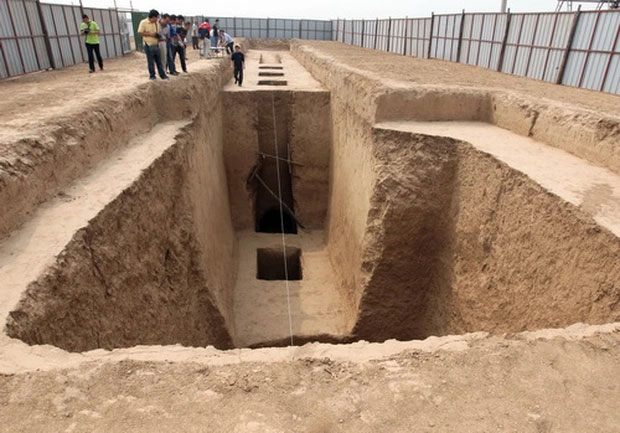
Tomb of Shangguan Wan’er.
Shangguan Wan’er was the chancellor of China’s only female emperor, Wu Zetian. However, after the empress’s death, she was killed in a bloody coup. Her final resting place remained a mystery for centuries.
This discovery caused a significant stir in the field of archaeology and Chinese history research. However, for archaeologists, the moment of excavation brought mixed feelings.
Unearthing an Ancient Tomb: A Cause for Joy or Sorrow?
“We did not need to excavate her tomb. She has been resting there for 1,300 years. Why should we disturb her in 2013? But when the tomb was damaged due to a construction project, we had no choice but to fulfill our duty,” said Li Ming, the lead researcher of the excavation, in an interview with Sixth Tone.
This situation is quite common in ancient cities across China, particularly in Xi’an in recent years.
Today, China places increasing importance on cultural heritage preservation. The department responsible for cultural heritage is now involved in every major urban development project, conducting surveys to identify and protect historical sites before any construction begins.
New measures have changed the “game” in Chinese archaeology, leading to many groundbreaking discoveries. However, they also pose challenges for ancient cities like Xi’an, which are known to harbor countless historical artifacts.
Xi’an is located in Shaanxi Province in northwest China, almost submerged by history. The first emperor of China, Qin Shi Huang, built his famous mausoleum and terracotta warriors several dozen kilometers to the northeast. Several subsequent dynasties used this city as their capital, including prosperous empires like the Han and Tang.
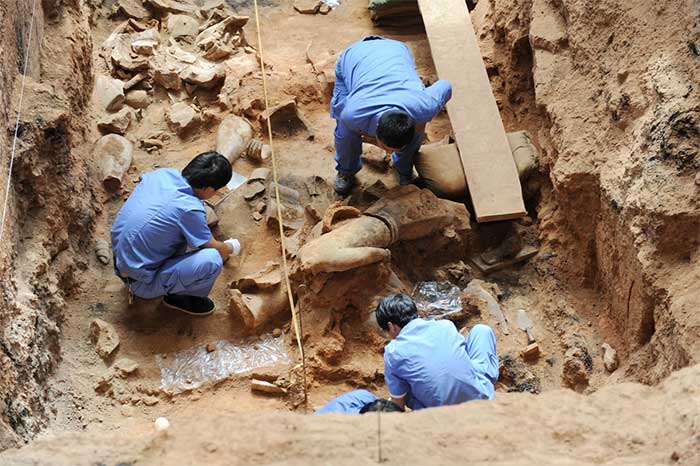
Archaeologists working in the tomb of the Terracotta Army of Qin Shi Huang
Notably, the Tang Dynasty (618-907) is regarded as a golden age for China. Xi’an, formerly known as Chang’an, was one of the greatest cities in the world at that time.
Protecting these heritages is a challenging task. Xi’an has 3,246 “tangible cultural heritage” sites, including 52 key national cultural relics. This list grows every year due to discoveries made during the city’s implementation of new construction projects.
Li Ming noted that the costs of protecting these sites are substantial, partially impacting the city’s development. Many projects have been halted or had their construction plans altered after ancient tombs were discovered.
Li Ming, who previously worked at the Shaanxi Provincial Archaeological Institute before being appointed as vice president of the Han Yangling Museum, also had to “scratch his head” over the discovery of an ancient tomb of a Tang Dynasty official during a road renovation plan in 2019.
The tomb belonged to Xie Shao, the first husband of Princess Taiping, the daughter of Wu Zetian.
Like many other Tang tombs, the discovered ancient tomb was an impressive architectural structure, but no human remains were found. The existence of tombs without remains reflects a facet of the societal realities of the Tang Dynasty at that time.
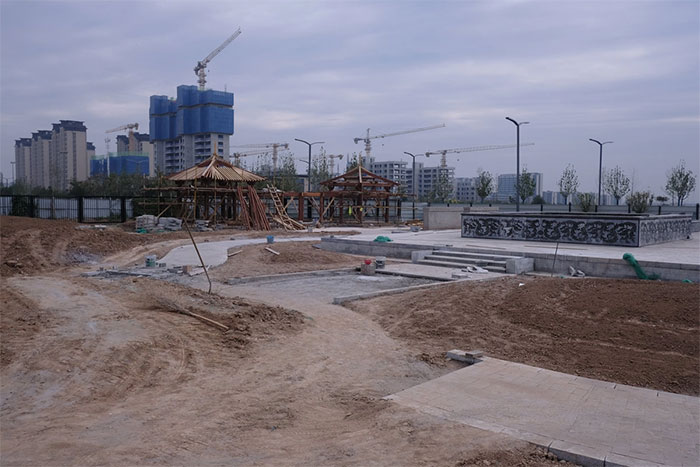
The tomb area of Xie Shao
Li Ming stated that archaeologists wish to avoid excavating these sites as much as possible. The ideal approach to protect historical artifacts is to keep them undisturbed underground. His team only acts when the remains are in danger, such as the tombs of Shangguan Wan’er and Xie Shao.
Archaeologists are working to map known burial sites in Xi’an to protect them from future developments. However, the work remains fraught with challenges.
The Historical and Cultural Value Contained in Ancient Tombs and the Challenges Ahead
In an interview with Sixth Tone, Li Ming discussed the challenges of preserving Xi’an’s cultural heritage and the historical value contained within ancient burial sites.
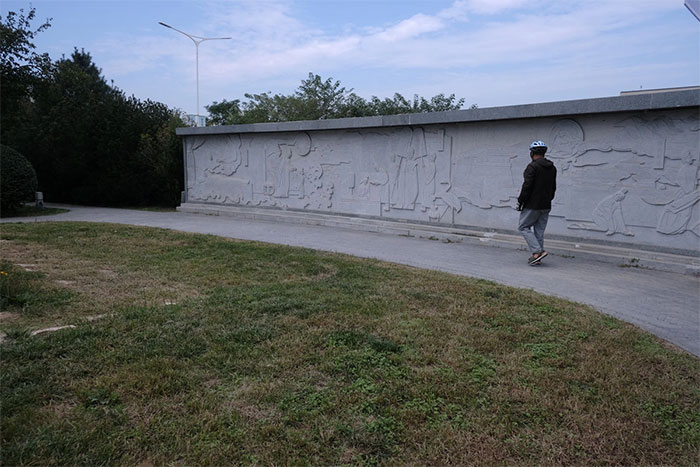
Park above the tomb of Shangguan Wan’er
What do the Tang tombs tell us about society at that time?
At that time, there were strict regulations regarding funeral rites. In ancient times, especially during the Tang Dynasty, everything from the depth of the tomb to the choice of location had to be meticulously adhered to. The rituals were set to reflect social hierarchy: each social class had the right to possess its own tomb, but the scale was strictly regulated. Mistakes would lead to punishment.
Regarding location selection, emperors held the highest status. While alive, emperors began searching for potential sites to build their tombs. The tomb of Li Yuan, the founding emperor of the Tang Dynasty, was constructed underground in the style of the Sui Dynasty. After him, the tombs of Tang emperors were built on mountains.
“We found the tombs of Shangguan Wan’er and Xie Shao in Hongdu Garden. This was a prestigious cemetery in northern Chang’an in ancient times, used for over 1,000 years and a resting place for royalty. During the excavation, we could determine whether this burial site belonged to nobility or commoners based on its scale and the burial goods,” Li Ming shared.
What do the tombs of Shangguan Wan’er and Xie Shao reveal?
“During the excavation, we did not find the remains of Shangguan Wan’er. The tomb had been severely damaged. Studies suggest that this damage may have been intentional, related to the power struggle between Emperor Li Longji and Princess Taiping,” Li Ming stated.
Li Longji killed Shangguan Wan’er, and Princess Taiping built a tomb for her. After Li Longji ascended the throne, tombs were no longer destroyed, as high-ranking court figures ceased their power struggles.
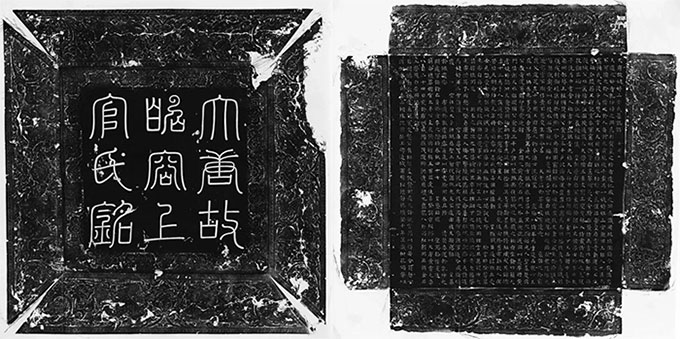
Inscription of Shangguan Wan’er
During the Tang Dynasty, funerals were as significant as weddings, being important social events. The funeral reflected the desires and political status of the organizer rather than the person being buried.
For instance, Xie Shao: when building this two-chamber tomb, he had actually been dead for 17 years. No one remembered him, and Li Ming’s team found no bones of his.
Despite his prominent background and status, Xie Shao was implicated in the rebellion of Li Zhi, the Prince of Vietnam, and was ordered by Wu Zetian, his mother-in-law, to be beaten 100 times and left to starve in prison.
It is known that at that time, not everyone was allowed or had the means to build a tomb for themselves. Low-ranking commoners could only be buried in the ground with very simple gravestones.
Yet Xie Shao—a convict—was granted a two-chamber tomb meant for the highest officials.
This move can only be explained through the political upheaval of that era.
After Wu Zetian, many two-chamber brick tombs suddenly appeared. This stemmed from the people’s struggle for their rights in the power vacuum left after the death of the empress. Building tombs and holding funerals became one of the ways to achieve this. Thus, one could rest in a magnificent tomb if they wished, provided they had the financial means to construct it.
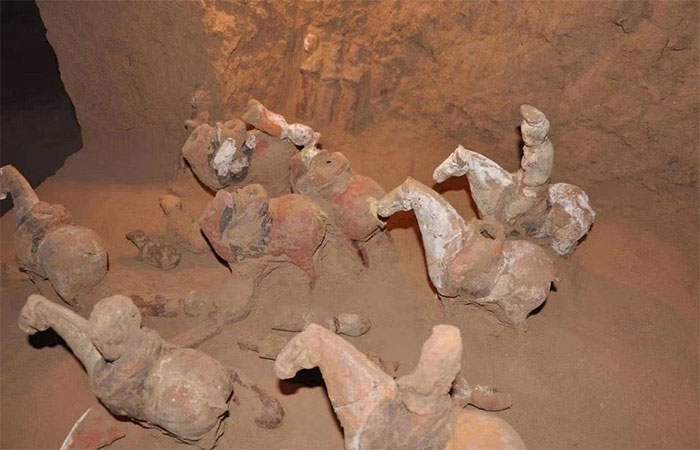
Interior view of the tomb of Shangguan Wan’er
What happens when an ancient tomb is discovered during a new construction project? How does the city balance cultural preservation with development?
China’s Cultural Relics Protection Law stipulates that when significant archaeological discoveries are made, the construction department must collaborate with the cultural heritage board to plan for preservation.
“Depending on the historical value, we employ various conservation methods. Building a museum represents the highest level of conservation and is also the most expensive. With so many high-ranking tombs, constructing a museum or a park for preservation is not truly ideal, due to limited land.”
For instance, regarding the tomb of Shangguan Yuanqi, we divided the road into two halves, buried the tomb underground, and constructed a park above it. In my opinion, this is a fairly ideal protection method. A park is also being built over the tomb of Jie Shao,” said Li Ming.
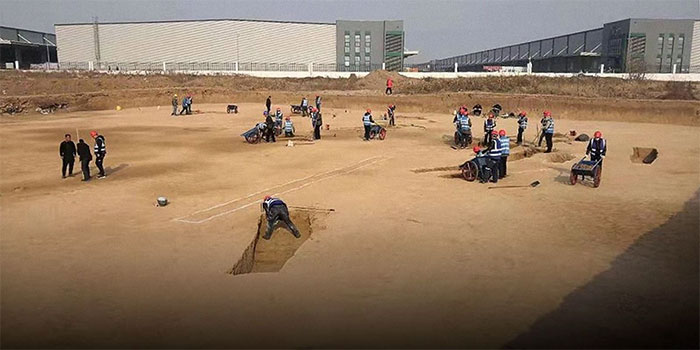
Relics found in the construction area of Xi’an International Airport
The current goal of Li Ming’s research team is to establish a database of known tombs. However, due to the immense volume of excavation work, with each site potentially managed by different teams, coordination proves to be quite challenging, and the research takes a significant amount of time.
“Over the past 30 years, China has rapidly developed with numerous construction projects. This means that archaeological work must be conducted more frequently. However, this is actually a counterintuitive situation, as our primary mission is not to excavate the tombs of ancient historical figures for public display. It would be better if we never had to find them and let them rest underground. This is the best way to protect them.”
“We are seeking new methods to protect ancient tombs, as this is still a relatively new issue that has only emerged in the last 2-3 years,” Li Ming stated.





















































